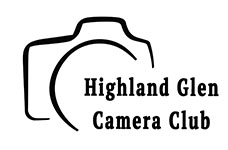Criteria
Judges are looking at three fundamental aspects of your image.
Technical:
- Are sharpness, depth of field, light, exposure, colour and other techniques used in a manner that is effective for the subject matter?
Composition:
- Does the composition bring the viewer’s attention to the point of primary interest?
- Is space used effectively?
- Does the image minimize unwanted elements effectively?
Emotion:
- What mood is conveyed?
- Is there a story or a message to the photograph?
- How was visual impact achieved – use of colour, form, point of view, proportion, etc?
- Does the image demonstrate uniqueness or creativity?
“A true photograph need not be explained, nor can it be contained in words.” – Ansel Adam
The Professional Photographers of America had a more detailed explanation in their article 12 Elements of a Merit Image .
Live Judging Process
For competitions with digital and print submissions, typically all digital images are judged first, then all of the prints are judged.
Ordinarily, each image will be judged only once, by secret ballot. The club owns an electro-mechanical scoring machine expressly for this purpose. The scores are read out for the image. Any of the judges, or the competition coordinator(s), may spontaneously request a re-scoring of an image should there be, in their view, a serious discrepancy in the individual scores. In this circumstance, the judges will be asked to discuss the characteristics of the particular image and acknowledge, or refute, their individual points of view. Subsequent to the discussion, the image will be re-scored, again by secret ballot. There is no requirement that any judge alter their score from the first attempt. In all cases, the judges’ score is final. Poor presentation (improperly matted print, damaged print) will result in lesser scores.
After the conclusion of the judging, the judges are also asked to provide brief comments on the images they score, with the aim being to give participants helpful feedback. However, due to the sheer number of submissions comments are usually restricted to the top scoring images and maybe some specific images that the judges want to highlight.
Online Judging Process
The judges are provided with a link to our online judging software where they are presented with images and their titles. They use the same software that we use to select images for competition. Each judge is asked to comment on a randomly assigned group of images so that all images have some feedback. They are free to comment on any other image as they desire. Since a judge cannot see the scores of the other judges, there may be more range in the scores for an image. Judges spend more time looking at images in online judging as compared to live judging consequently they may be more critical or they may spot positives that may not be obvious with a quick glance. Although the excitement of live judging is missing, there is the opportunity to provide feedback for all images.
Scoring
Three judges each give an image a score out of 10, so the final score for an image is a number out of 30. Scoring guidelines are as follows:
- 1-2-3: not normally used
- 4-5: fair
- 6-7: average
- 8: above average
- 9-10: exceptional
For CAPA (Canadian Association for Photographic Art) competitions, three judges are used. The judges are all CAPA trained or certified. Judges score each photograph using a 10-point system. The points of all three judges are added together to deliver the score of the photograph out of 30.
In practice, judges use the scores from 4 to 10 points for each image. Scores of 4 are rarely used unless the image has major faults, e.g., exposure and focus are far from standard. A total of 30 points is a rare occasion, but wonderful when it happens. When assigning a score, judges are asked to keep in mind that one of CAPA’s objectives is to encourage the members who are competing, and not to discourage their efforts. Consequently, scores will be higher than international competitions. The following chart outlines the range of scores:
- 1-3: not normally used
- 4: extremely poor with very multiple serious faults
- 5: fair, possibly with major faults
- 6: average, no significant flaws but does not stir the emotions or tell a story
- 7: good solid image, good choice in subjects, lighting, dramatic competition, depth of field, emotional impact, tells a story
- 8: excellent image, above average in technical qualities and impact
- 9: exceptionally good, very high technical qualities and high impact
- 10: demonstrates the ‘wow’ factor, outstanding impact and technical aspects
Competitions with Categories
For competitions with categories, images will be judged by category, so that all of the images in a category, regardless of media, will be evaluated together in the hope of providing greater consistency in scoring. The judges mark down images they deem inappropriate for the category, even if the image has been accepted by the competition coordinator.
When competitions have categories, the editing criteria/restrictions may be very different for the individual categories. In particular, nature, macro, and photo journalism categories can have very restrictive editing criteria.
